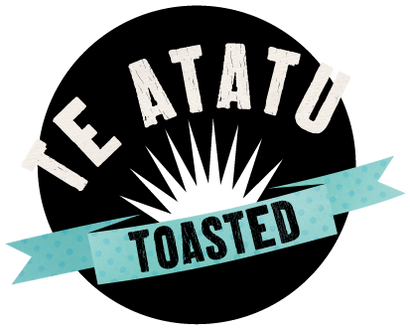Your Cart is Empty

Low sugar breakfast options for kids
November 08, 2021
It’s Diabetes Action Month and we are shining a light on sugar.
Diabetes is the result of the body not creating enough insulin to keep blood glucose (sugar) levels in the normal range. The most common type of diabetes in New Zealand is Type 2, which most often occurs in adulthood, usually after the ages of 30 to 40 years.
However, Diabetes New Zealand says increasing numbers of teenagers and children are developing Type 2 diabetes, which could lead to health complications they will have to deal with for the rest of their lives.
Te Atatu Toasted founder Clare Robinson is passionate about giving Kiwi kids a nutritional “real” breakfast that will fuel their day. Here are her tips for cutting out sugar at breakfast and giving the whole family a great start every morning.
Choose breakfast cereals that are lower in sugar
Diabetes NZ recommends choosing a cereal that contains less than 15g of sugar per 100g. A review of breakfast cereals by Consumer in 2012 found that the average was 18.9g of sugar per 100g and many contained more than 20g of sugar per 100g. Children’s cereals, on average, are even worse with some containing 30g or more of sugar per 100g.
Choose breakfast cereals with fewer ingredients
You should be able to recognise all the ingredients in the cereal your family eats. Fewer ingredients usually means the cereal has more “nutritional goodness” and is less processed or refined. All the ingredients in Te Atatu Toasted Coco Crunchies have been chosen for their health benefits while still being delicious to eat.
Choose cereals without additives.
When a cereal’s ingredients list contains lots of numbers, it means it has additives such as such as sulphites, preservatives and emulsifiers. Real foods shouldn’t need these. Often preservatives are added to increase a product’s shelf life to more than two years so it’s hardly fresh. Besides, who wants to eat numbers!
Enjoy breakfast with fresh fruit and plain yoghurt
This helps give variety, colour and different textures, which children love. It also helps us get our daily nutrient requirements.
Gradually cut out sugar
We can all get used to eating less sugar, but sometimes it takes time, especially for children who have been accustomed to higher amounts. You may find gradually cutting it out will help. If you change to a lower sugar, additive-free breakfast cereal, try drizzling a little honey over it to encourage your kids to eat it, and then gradually cut this back.
Watch sodium levels
Many foods that are lower in sugar have high sodium levels to give flavour. Food Standards Australia New Zealand recommend a daily sodium intake of 2.3g. Eating 50g of some cereals can account for as much as 10 per cent of the recommended daily requirement. With such a high start to the day, it makes it difficult to keep within the daily guidelines.
This month as part of Diabetes Action Month, we are offering all our customers 10% off any casual purchase. Just use the code 10%OFF at checkout.
